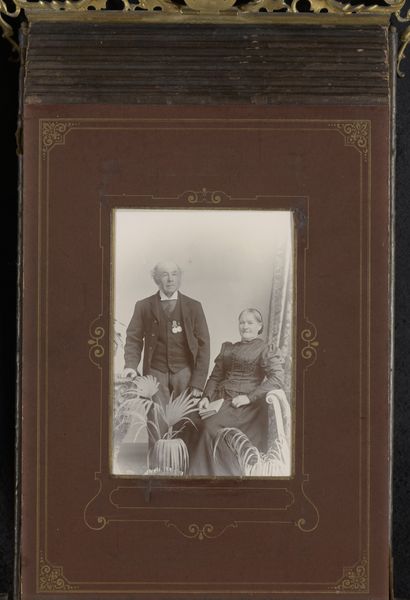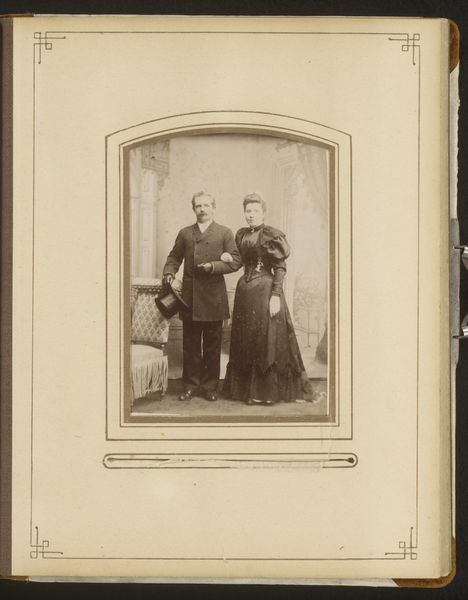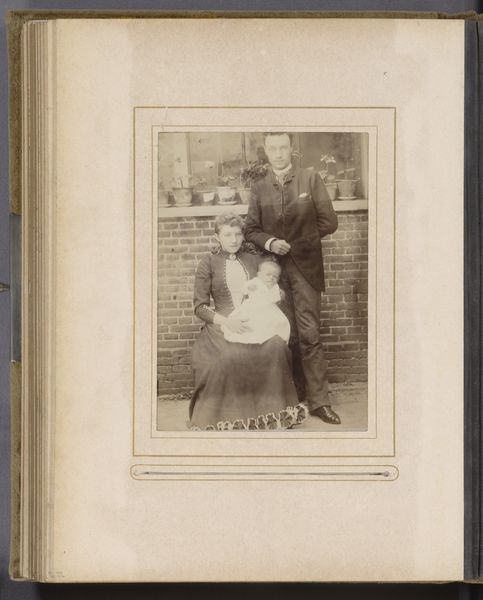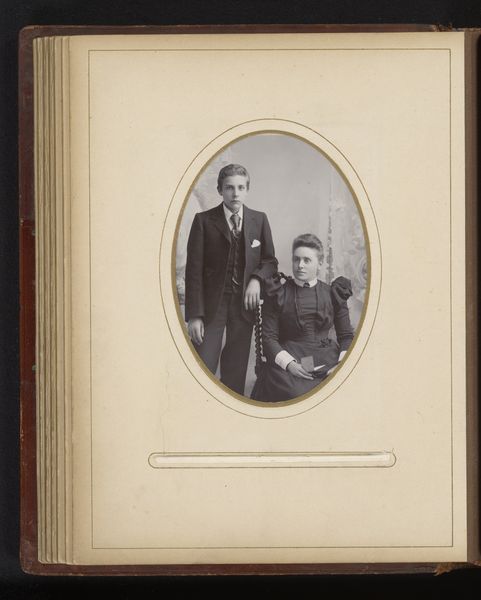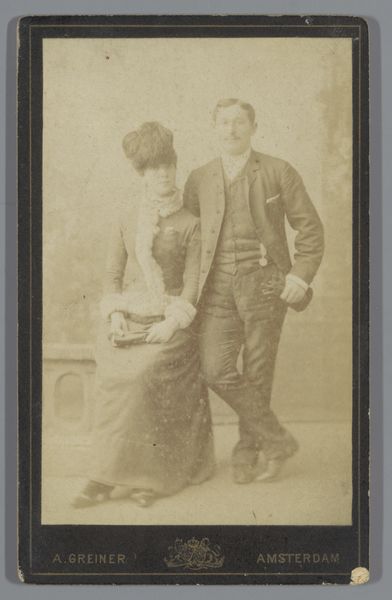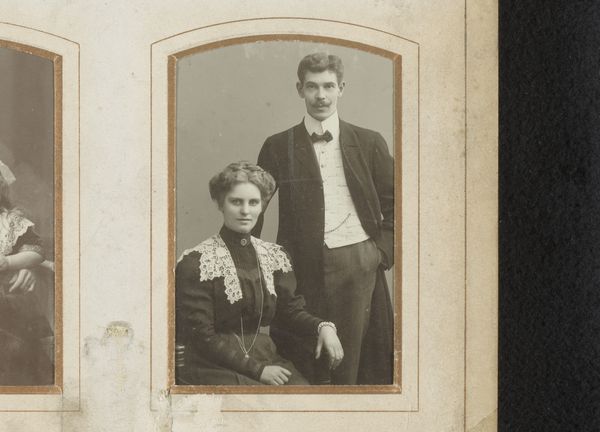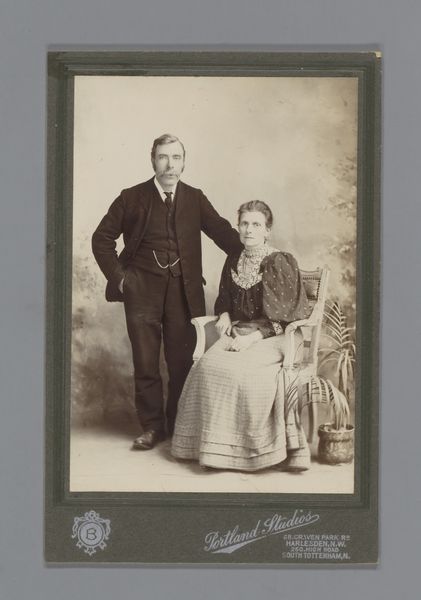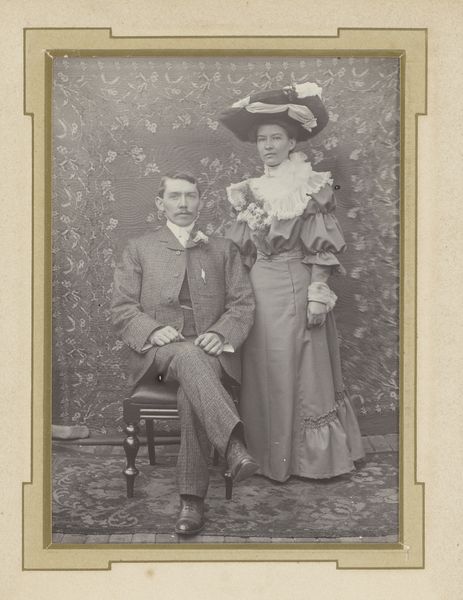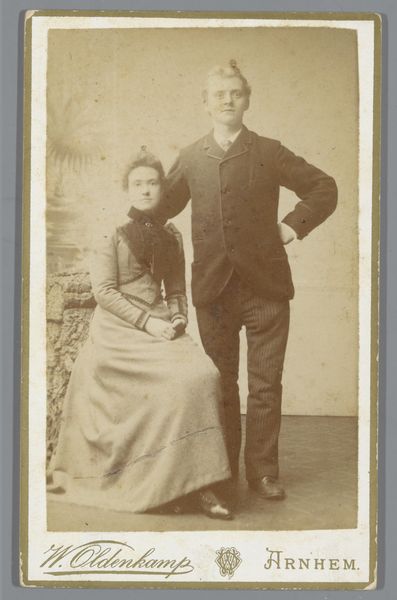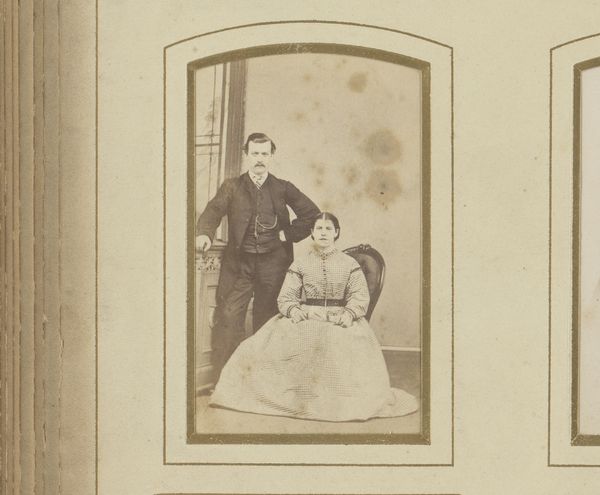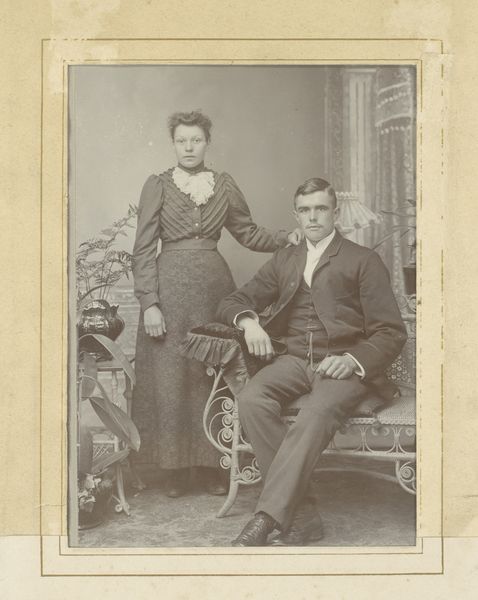
photography
#
portrait
#
pictorialism
#
photography
#
group-portraits
#
genre-painting
Dimensions: height 142 mm, width 93 mm
Copyright: Rijks Museum: Open Domain
Curator: Here we see a striking turn-of-the-century portrait, believed to have been taken between 1880 and 1920, known simply as "Portret van een echtpaar", depicting a formally dressed couple. It's an interesting example of pictorialist photography. Editor: My initial feeling is that the pair strike quite a melancholic pose. Despite the formality of dress, and their assumed status, there’s a distinct air of somberness about their faces. Do you get that? Curator: Indeed. Early photography, especially for formal portraits, had an inherent gravity. Consider though that their pose, while seemingly simple, echoes countless paintings and images that communicate not only the visual representation of a couple, but speak to historical notions about fidelity, obligation and sanctioned relationships between people. Editor: Yes, exactly. The woman’s hand, resting perhaps a touch possessively on the man’s shoulder, underscores the sanctioned and constructed nature of this coupling. One could read the formality of their dress codes, with high lace collars on the woman, to reveal rigid expectations about class and gender at the time. Curator: What I find fascinating about photographs such as these, especially from the pictorialist movement, is how they borrowed so deliberately from the aesthetics of painting. Note the soft focus, and the way light and shadow render these two figures. Their cultural identity, as well, comes down to us through not only the symbolic trappings of clothes and background setting, but pose. It gives visual language an immense continuity over time. Editor: Absolutely, and the emotional impact isn’t incidental either. There is also an economic subtext. They would have consciously curated the public presentation of themselves; after all, these weren't snapshots, but commissioned photographic items intended for circulation among family, and in social spheres. The setting acts almost like a stage. Curator: Looking at this, I am struck again by how powerfully early photography, though intended as a simple "record" of a moment, functions to actively encode its sitters into pre-existing narratives. This is how, in essence, history is created, framed, and reframed for successive generations. Editor: For me, the real takeaway here is recognizing how images never appear innocently, but participate, then and now, in systems of communication about how society arranges itself. Food for thought.
Comments
No comments
Be the first to comment and join the conversation on the ultimate creative platform.
